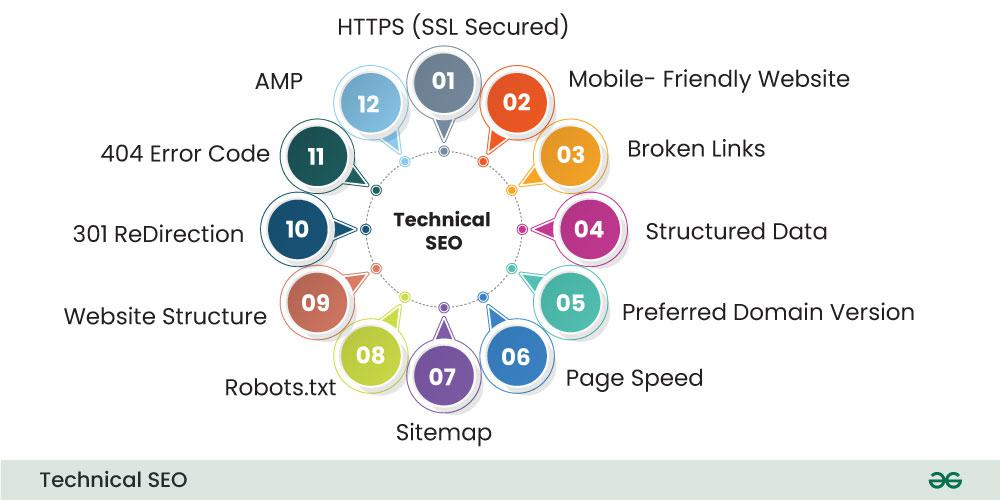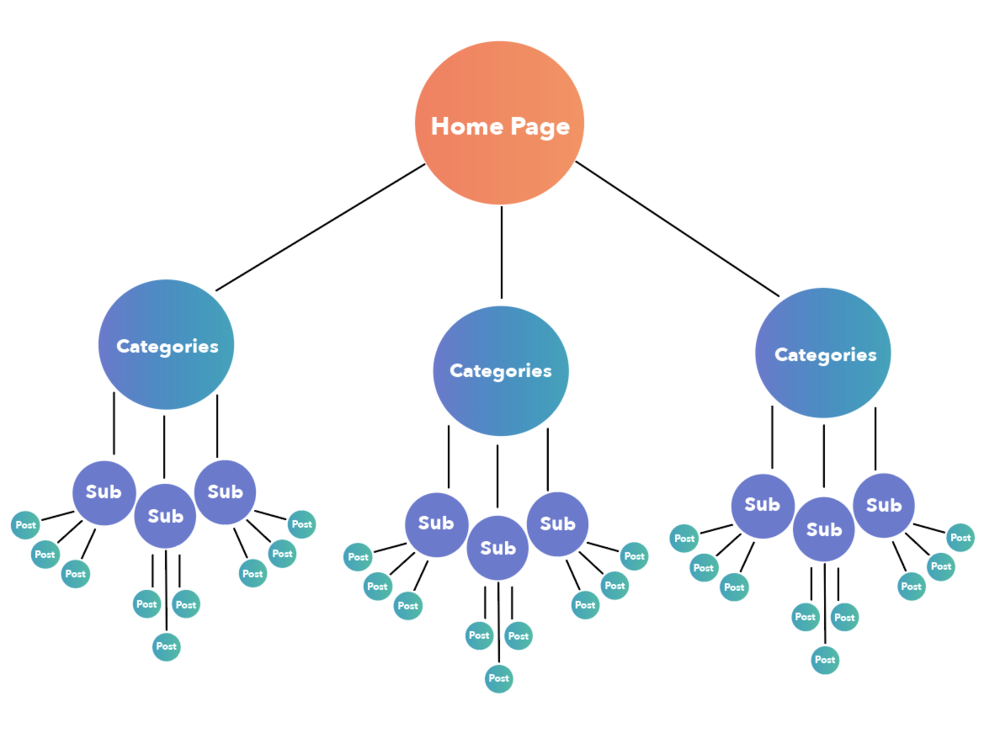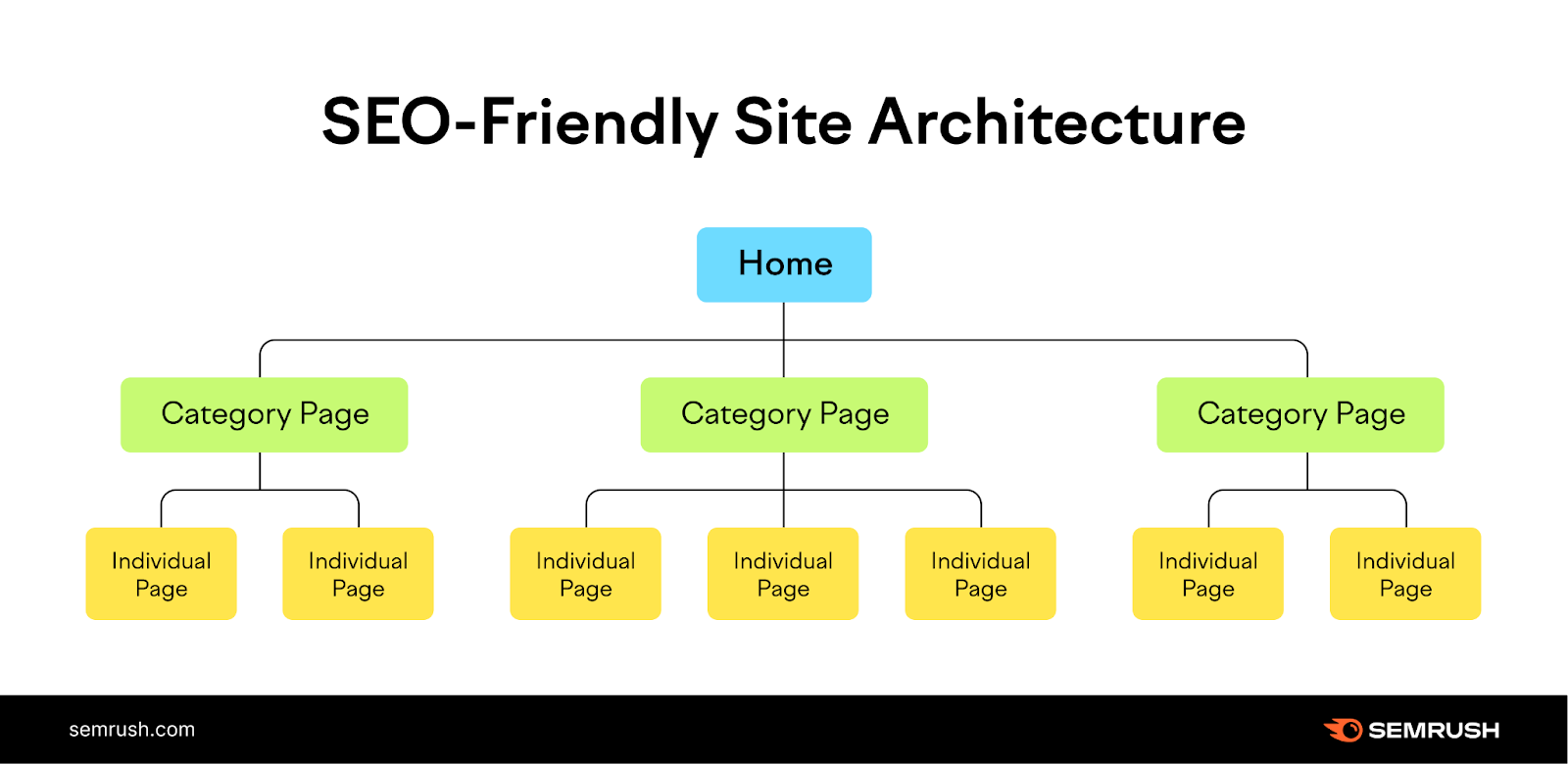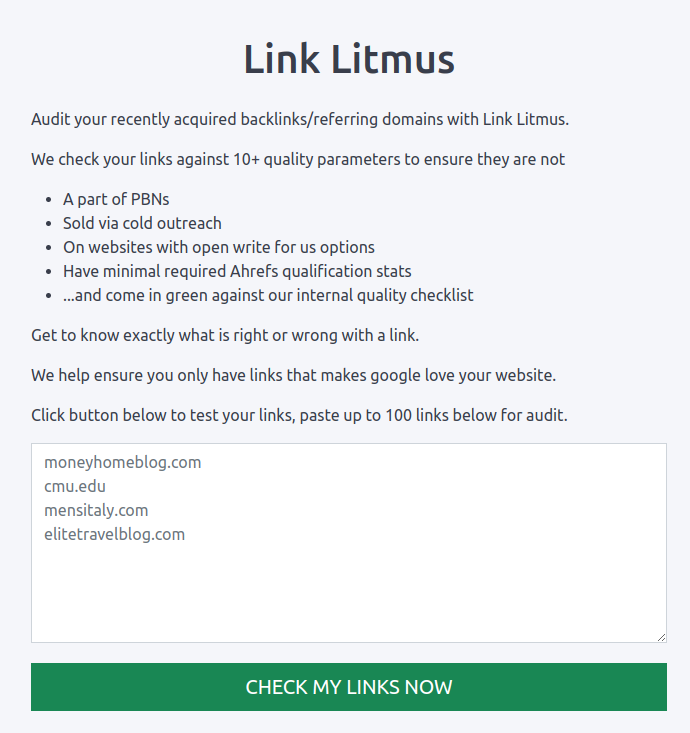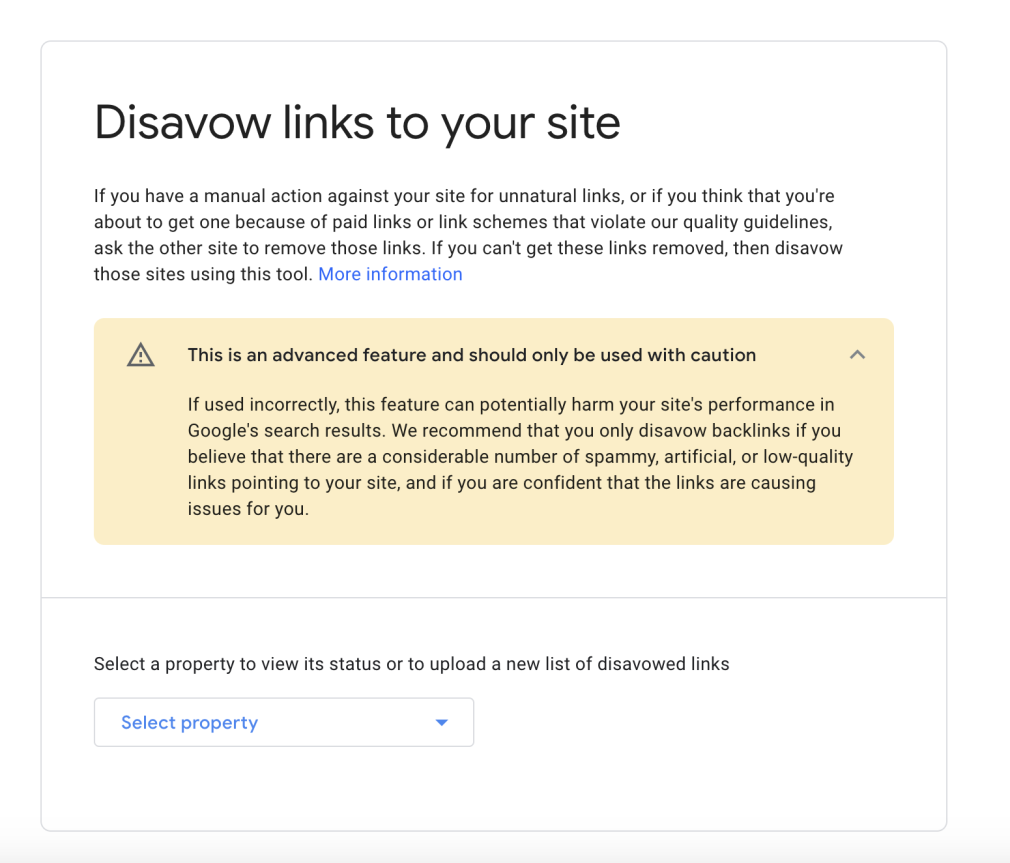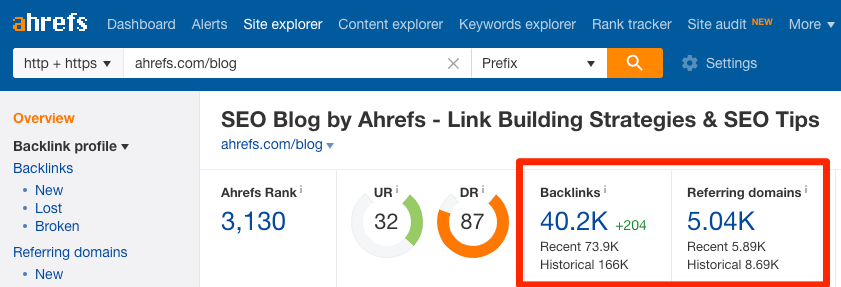Have you ever observed how some eCommerce sites, even those selling the same products as everyone else, always seem to come up first in your search results?
What distinguishes them is frequently their knowledge of link building, a critical component of search engine optimization (SEO) that considerably increases a site’s exposure and credibility.
Getting backlinks to your product pages is important, as most retailers online know, but depending just on these pages can restrict the possibilities of your website.
Given all that the digital ecosystem has to offer, why limit your strategy to just one kind of content? However, how can you successfully diversify?
This blog will discuss creative link-building techniques that cover a range of content kinds and open up new opportunities for your business.
Are you ready to learn how to get more high-quality backlinks and increase the online visibility of your eCommerce website?
Understanding the Basics of Link Building
semrush.com/blog
Link building is the practice of getting links to your website from other websites. Users can move between pages on the Internet by using hyperlinks, which are typically referred to as links.
Search engines crawl links between individual pages on your website and links between entire websites as part of their web crawling process.
Regarding SEO, every link pointing to a website is like a vote of confidence, telling search engines that other people think the content there is worthwhile and worthy of being cited.
How Link Quality, Relevance, and Diversity Impact SEO
Search engines do not view all links equally. Your site’s SEO performance can be greatly impacted by the links’ diversity, relevancy, and quality:
- Quality: Links from trustworthy, high-authority websites are more advantageous than those from questionable, low-quality websites that can be spam. Search engines evaluate the linking site’s authority by considering user interaction and content quality. A significant change in the structure of search engine results pages (SERPs) was indicated when Google declared its plan to remove 40% of unoriginal and low-quality information.
- Relevance: Links from websites that align with your website’s industry or niche work better than links from irrelevant websites. For example, a link from a sports news website to an eCommerce site selling sportswear has a more significant effect than a link from a culinary website.
- Diversity: Having a varied link profile is advantageous. This entails obtaining links from several domains, sources, and content types. It aids in creating a link profile that appears natural and is preferred by search engines.
Challenges Specific to eCommerce Link Building
Link building for eCommerce sites poses particular issues that may not be as prevalent in other SEO operations.
- Product Focus: Compared to content-rich pages like blog posts or videos, product pages are the main focus of many eCommerce sites, which might make them less appealing to link to. Beyond product descriptions, creating linkable assets is essential.
- Competition: Obtaining links from industry leaders or influencers without any prior relationship might be challenging in the highly competitive eCommerce sector.
- Seasonality: The seasonality of many eCommerce products can lead to year-round variations in search engine performance and link acquisition rates.
- Scalability: Updating and maintaining a robust link profile for new and old product pages becomes more complex as inventory rises.
Advanced Strategies for eCommerce Sites Beyond Product Pages
Making an impression in the cutthroat world of eCommerce calls for more than simply product display; it also calls for a diverse strategy to link building and content production.
eCommerce websites can reach a larger audience, engage users more successfully, and build essential backlinks to improve their SEO performance by varying the types of content they publish.
Content Marketing Strategies for Diverse Link Acquisition
A successful link acquisition strategy for eCommerce sites starts with content marketing. According to a recent poll, content marketing was cited by 12.5% of participants as the method that produced the best returns for their link-building efforts.
Creating Compelling Blog Content
eCommerce websites can use their blogs to provide product updates, customer testimonials, industry insights, and more. With over 4.4 million new blog articles published every day, your contribution needs to stand out in order to be noticed in the digital world.
To write blog posts that are engaging:
- Identify Relevant Topics: Look up popular subjects in your area of expertise, examine client FAQs, and discuss news and advancements in the business.
- Optimize for SEO: Optimize for search engines (SERPs) by using relevant keywords and meta tags and crafting catchy titles and meta descriptions.
- Incorporate Multimedia: To improve engagement and shareability, include images, videos, and interactive components.
How-To Guides and Tutorials
blog.hubspot.com
Tutorials and how-to guides give detailed directions for accomplishing objectives or resolving particular issues. In-depth resources like this help the eCommerce site become recognized as an authority and draw referrals from other websites.
Creating effective how-to guides and tutorials requires clear, succinct language, actionable recommendations, and addressing frequent pain areas.
Infographics and Visual Content
Visual content, such as infographics, makes complex information easier for audiences to understand and share by presenting it in an eye-catching way. Infographics are read 30 times more frequently than text articles, and incorporating relevant visuals into content can help consumers recall 65% of the information.
Selecting compelling data is the first step in creating excellent infographics and visual content. Collect facts that interest your audience, such as industry statistics, study findings, or pertinent product information.
When designing, focus on clarity. Use clear images, simple layouts, and complementary colors to increase readability and comprehension.
To increase the visibility and impact of your visual information, post it on social media, submit it to infographic directories, and interact with influential people in the field.
Here’s a sample infographic:
semrush.com/blog
-
Leveraging Social Proof and Community Engagement
Social proof and community involvement are very effective methods for eCommerce sites looking to establish authority, credibility, and trust.
Customer Testimonials and Case Studies
A product’s efficacy and customer happiness can be demonstrated concretely through case studies and client testimonials.
In fact, research indicates that 72% of customers agree that a company’s positive reviews increase their trust in it. Plus, over 88% of shoppers believe online reviews are just as trustworthy as personal recommendations.
Building Relationships with Influencers and Bloggers
Influencers and bloggers have enormous influence over their audiences and can be effective advocates for eCommerce brands.
eCommerce companies can increase their visibility and credibility by working with influencers on sponsored content, product reviews, or guest blog pieces. This will ultimately increase traffic and sales.
An Oracle study indicates that 37% of consumers trust social media influencers more than companies. The tendency to trust influencers is twice as high among Gen Z and millennials as it is among boomers.
Here’s an example of how influencer marketing can be used to form new connections: Travelocity was helped by marketing software provider Traackr to create more sincere and personal connections with its consumers.
Together with influencers, Traackr and Travelocity sought to debunk the myth that internet travel firms are impersonal and transactional. They organized events to foster relationships with influencers and produced content to increase brand awareness.
-
Utilizing Resource Pages and Partnerships
eCommerce sites can gain significant backlinks and increase internet visibility through resource pages and partnerships.
Resource Page Link Building
Resource pages are carefully compiled lists of useful references and links related to particular subjects or fields. Aira’s 2022 State of Link Building Report says 24% of SEOs use this strategy.
The possibility of being featured, obtaining worthwhile backlinks, and generating referral traffic to the eCommerce site is increased when one provides useful content or resources that complement the resource page’s theme.
Here’s an example of a resource page.
ahrefs.com/blog
Partnering with Non-Competitive Brands
eCommerce sites can benefit from partnerships with non-competitive brands in complementary industries.
Here’s an example of how working with non-competitive brands can be mutually beneficial: Starbucks, known for transforming the coffee shop experience into a global sensation, cleverly included music to enhance its environment. Meanwhile, Spotify has emerged as a music streaming behemoth, with roughly 25 billion hours of listening time worldwide.
Starbucks and Spotify formed a creative co-branding collaboration with the goal of developing a “music ecosystem.” Through this collaboration, Spotify’s huge music catalog enhances the Starbucks customer experience, exposing artists to Starbucks’ sizable consumer base.
This partnership illustrates how companies in non-competitive industries can work together to increase value and expand their reach.
-
Technical SEO and Site Structure Optimization
geeksforgeeks.org
A thorough SEO strategy for eCommerce sites must include technical SEO and site structure optimization.
Optimizing Site Structure for Link Equity Distribution
To optimize the flow of link equity throughout a website, content must be arranged in a logical hierarchy.
blog.hubspot.com
Using a Theme Pyramid structure is recommended for optimizing your website for search engines. This starts with your homepage at the top and then moves on to additional well-organized pages throughout your website.
Link equity, sometimes called link juice, transfers value hyperlinks from one page to another.
The following are some methods for improving site structure:
- Implementing a flat site architecture helps reduce the clicks needed to access crucial pages.
- Using breadcrumb navigation to indicate the site’s hierarchical structure and improve user navigation.
- Incorporating internal linking strategies to distribute link equity to relevant pages and improve crawlability.
Creating a Link-Worthy Site Architecture
semrush.com/blog
A link-worthy site architecture involves designing website elements and features that attract inbound links from external sources. Strategies for creating a link-worthy site architecture include:
- Writing quality and informative content that addresses the needs and interests of target audiences.
- Inserting multimedia elements such as images, videos, and infographics +enhances content engagement and shareability.
- Implementing user-friendly design elements and intuitive navigation enhances user experience and encourages visitors to explore the site further.
-
Monitoring, Measuring, and Maintaining Link Health
Monitoring, measuring, and maintaining link health are essential for eCommerce sites effective link-building and SEO management.
Tools for Tracking Backlink Profiles
Tracking backlink profiles involves monitoring and analyzing the links pointing to a website from external sources. Several tools, including Google Search Console, Ahrefs, Majestic, and many more, are available to help eCommerce sites track their backlink profiles.
https://outreachcrayon.com
In addition to these tools, Link Litmus offers a backlink tracking solution. You can efficiently go through your recently acquired referring domains/backlinks with this tool.
The tool check against more than 10 quality parameters in order to make sure the backlinks are not a part of PBNs, sold via cold outreach, have minimal required Ahrefs qualification stats, and much more.
Strategies for Disavowing Bad Links
semrush.com/blog
Disavowing bad links involves informing search engines to ignore specific backlinks that might harm a website’s SEO performance. Strategies for disavowing bad links include:
- Identifying toxic links: Use backlink analysis tools to identify low-quality, spammy, or irrelevant backlinks pointing to your site.
- Creating a disavow file: Compile a list of URLs or domains of undesirable backlinks and create a disavow file in Google’s Disavow Links tool.
- Submitting the disavow file: Upload the disavow file to Google Search Console to inform Google to disregard the specified backlinks when assessing your site’s authority and relevance.
Regular Audits and Adjustments
ahrefs.com/blog
Regular audits and adjustments involve reviewing and optimizing a website’s link profile to ensure its health and effectiveness. Assess the quality and relevance of backlinks to ensure they comply with Google’s guidelines and contribute positively to your site’s SEO.
Look for issues such as broken links, redirect chains, or duplicate content that may impact your site’s SEO performance and take appropriate corrective actions. Continuously refine and adapt your link-building strategies based on audit results, changes in search engine algorithms, or industry trends.
Conclusion
Mastering link-building strategies beyond product pages is imperative for eCommerce sites aiming to thrive in today’s competitive digital landscape. Partnering with a top link building company can provide the expertise and resources needed to secure high-quality backlinks and elevate your site’s authority.
By diversifying content types, leveraging social proof, optimizing technical SEO, and monitoring link health, businesses can strengthen their online presence, attract more quality traffic, and drive sales.
Relying solely on product pages for link acquisition is not enough; embracing a holistic link-building approach opens up new avenues for growth and visibility. As eCommerce continues to evolve, staying ahead requires innovation and adaptability.






